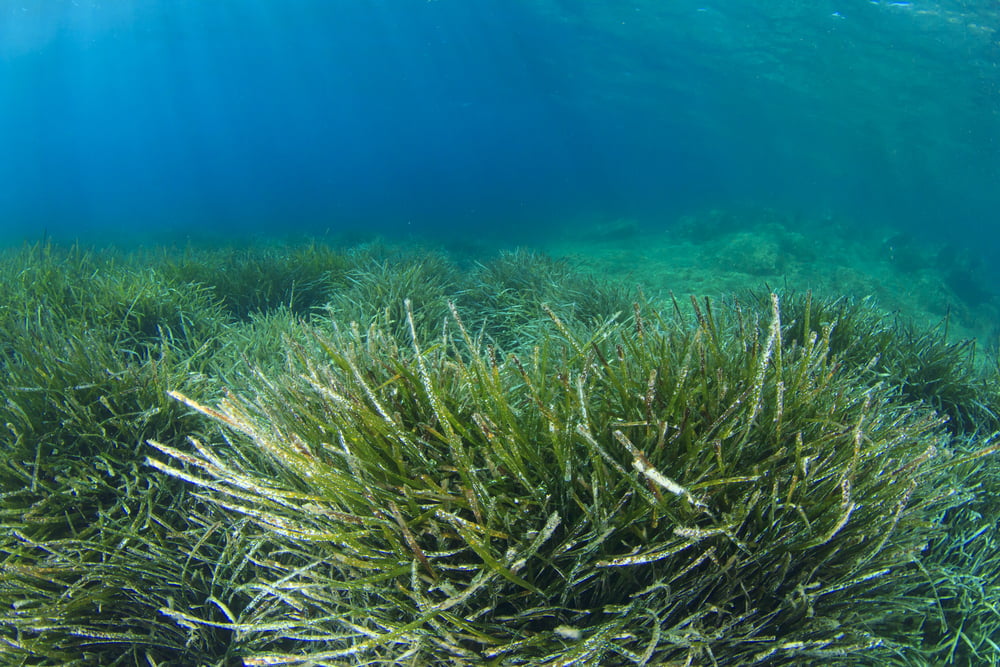Seagrasses are some of the most vital plants in the aquatic environment.
The only flowering plants able to survive underwater, seagrasses provide habitats for an array of marine life — from commercial fish to endangered species — helping ensure food security, support local economies and maintain the diversity of marine ecosystems.
They also help combat climate change, absorbing carbon emissions, filtering nitrogen out of our waters and reducing the impact of coastal erosion by softening the force of waves.
However, seagrasses are under threat.
According to the latest research, up to 92% of seagrass meadows have disappeared in the last century, with almost half of the losses taking place in the past three decades due to pollution, climate change, coastal development programmes and overfishing.
That is why we are proud to have partnered with the Ocean Conservation Trust: an organisation helping protect and restore seagrasses across the UK.
Taking action to preserve marine environments
Over 25 years ago, a group of marine scientists, educators and divers had a vision to create a charity dedicated to the health of aquatic habitats, which is now known as the Ocean Conservation Trust.
In its first few years, the charity opened the National Marine Aquarium and launched a grants programme to fund grassroots conservation projects. As time passed, this organisation began to target more specialised challenges — and started working on preventing the loss of seagrass habitats in 2013.
The trust’s seagrass restoration efforts span far and wide, from developing groundbreaking eco-friendly mooring systems, to supporting research drives investigating tropical seagrass decline. Its biggest and most ambitious initiative is the Blue Meadows project, which has two aims…
Firstly, the project sets out to protect existing seagrass meadows. By identifying and marking vulnerable areas, providing boats with an alternative to seabed anchoring and measuring the impact of these changes on seagrass meadow health, they can help seagrass to recover and regenerate.
Its second goal — to cultivate new seagrass habitats — sees the charity transplant seedlings that have been nursed in a purpose-built aquaculture facility into areas of the ocean where they can grow into healthy seagrass meadows.
These efforts make a huge difference to seagrass health in the UK, minimising the impact of human activity to protect the seagrass we have and help to restore what we have already lost.
But the Ocean Conservation Trust cannot do this alone. It needs reliable mooring solutions that do not damage the seabed, as well as appropriate navigational aids to keep sea traffic at a safe distance.
That is where Hydrosphere comes in…
Supporting seagrass restoration with AtoN
As the UK’s leading supplier of marine aids to navigation (AtoN), Hydrosphere provides high-quality, cost-effective equipment designed to create safe zones around nearshore and offshore activity sites.
Our portfolio includes numerous Mobilis buoys, which boast several qualities that make them ideal for marking seagrass meadow restoration sites.
Mobilis buoys are highly visible, ensuring the lowest possible risk of marine traffic entering seagrass restoration and cultivation zones. They are also constructed with durable materials and dependable technology, reducing the need for disruptive maintenance so seedlings can grow peacefully for as long as possible.
For these reasons, the Ocean Conservation Trust selected Hydrosphere and Mobilis as the sole AtoN suppliers for the Blue Meadow project.
We have proudly provided Mobilis navigation buoys to help manage sea traffic around restoration sites. These solutions notify boats that speeding and anchoring are prohibited, steer them away from restricted zones and instruct fishermen not to cast their nets where seagrasses lie.
Additionally, we supplied Mobilis mooring buoys to facilitate anchor-free mooring around the activity areas, preventing ships from damaging the seabed where seagrass meadows are growing.
Both types of buoy are fully recyclable, providing an effective and sustainable solution for the development of the Blue Meadows project.
Partnering to build a sustainable future
By joining forces to give the UK’s seagrasses the best chance of survival, Hydrosphere, Mobilis and the Ocean Conservation Trust are helping create a healthier ocean and supporting a more sustainable world.
Speaking about our partnership, the Ocean Conservation Trust said: ‘We are delighted to be working with Hydrosphere towards our goal of protecting 700 hectares (around 10% of UK seagrass meadows) over the next five years. By using buoys to highlight active project areas, we give seagrass a chance to recover and regenerate’.
And the feeling is mutual.
Our technical sales area manager Matthew Atkins commented: ‘Hydrosphere and Mobilis are thrilled to be working with the Ocean Conservation Trust on this project. The restoration and conservation of the UK’s seagrass beds is such an important issue, and we are keen to play our part in this and help make a positive difference’.
We are immensely pleased to be able to raise more awareness about seagrass restoration and cannot wait to see how the new meadows flourish in years to come.
Hydrosphere supplies a broad selection of marine AtoN suitable for a range of applications. If you would like to know more about our products and services, mailto:contact us via sales@hydrosphere.co.uk or call +44 (0)1420 520374.








